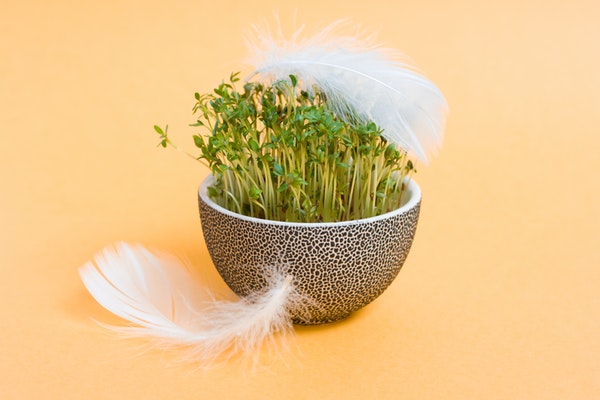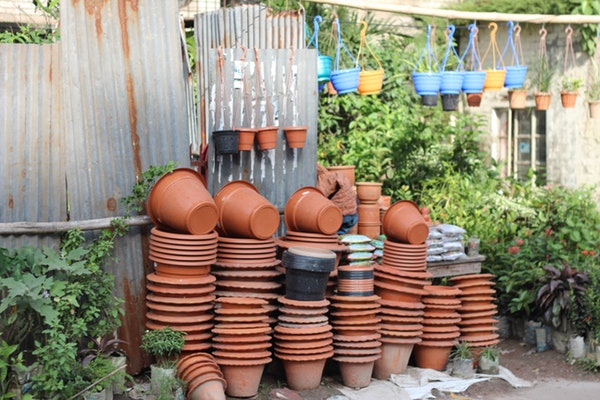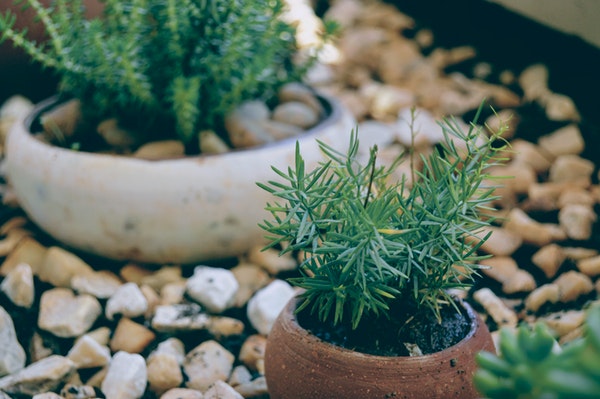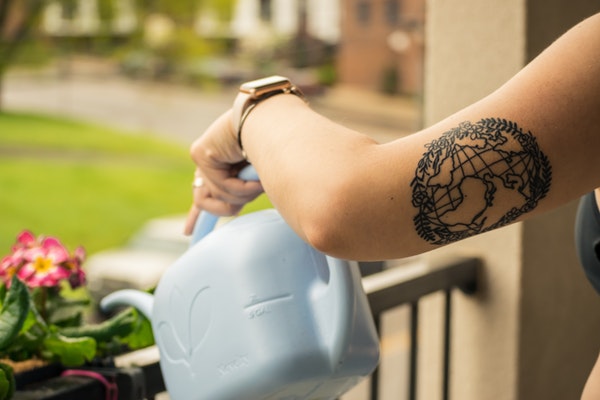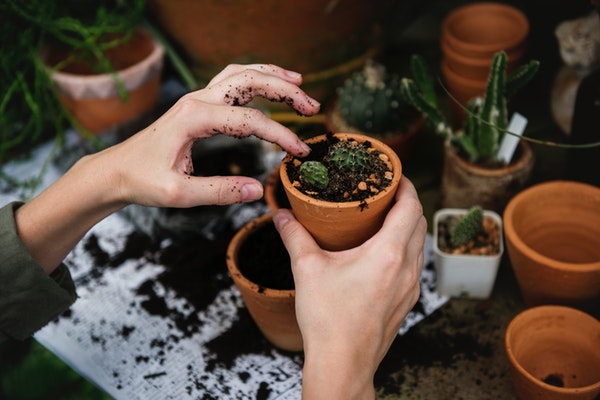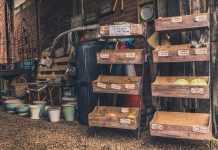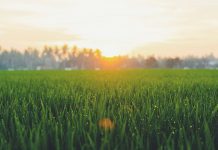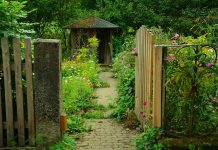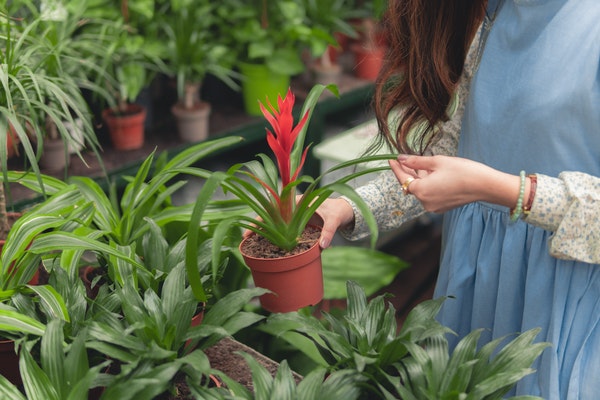
There are almost as many techniques for planting garden pots and urns as there are garden pots and urns. One in three American households now grows their food according to the National Gardening Association (NGA). Millennials between the ages of 18-34 are the most robust segment of food gardeners.
For the frugal and lovers of recycling and re-purposing, the concepts of garden pots have become extremely popular. That is particularly true of cities where space and sunlight can be limiting factors or when you have a vertical garden. Garden pots are also less expensive and can support a variety of vegetables, herbs, flowers, creepers, and drapes. You could go high on an Italian terracotta pot or spend next to nothing on a can or a pair of crocs.
As far as the garden pots are concerned, the options are limitless. There are tall pots, short pots, hanging baskets, metal containers, fabric containers, tin cans, and the list goes on.
Why Choose Pot/Container Gardening?
Image via Pexels
Garden pots can add vibrant color and sparkle to your patio, balcony or garden. Strategically placed garden pots can make a dull corner look exciting or distract from an ugly tile or floor. Apart from ornamentation, herb and vegetable garden pots can provide food for your kitchen.
They are also easy to transplant. If you live in a cold climate, where frost and snow are a concern, then garden pots are a great option. You can haul all your pots inside for a season to protect them from the elements. However, garden pots need maintenance. It requires a great deal of care, and with these tips, you should be successful in planting your garden pots.
Tips about Garden Pots
So what’s the secret to beautiful garden pots? A beautiful arrangement? Expensive pots? Before you consider gardening with garden pots check out the tips below.
Choose the right garden pots
Choosing the right garden pots may seem like a no-brainer, but selecting the wrong type is the most common mistake people make. There are many types of garden pots from wooden, to metal, fabric, plastic, concrete, hypertufa, terracotta and fiberglass. Terracotta is delicate and doesn’t survive frequent freezing and thawing, so it isn’t suitable for cold climates. They also need to be lined from the inside to prevent them from drying out.
Wooden Garden Pots
No products found.
Wooden garden pots can look gorgeous, but don’t survive more than a season or two. Contact with moist soil can cause it to deteriorate. Cedar and teak do tend to last longer but not pine. Stainless steel cans and shiny troughs can rock the garden scene. The only disadvantage is the heat. They can turn searing hot, burning your plants. If you plan to plant your metal garden pots in a shady area, then it’s a viable option.
Stainless Steel Garden Pots
No products found.
Plastic garden pots have come a long way. However, sunlight degrades plastic. After a while in the sun, plastic tends to fade and become brittle. If you’re growing edibles, you may want to reconsider as plastic tends to leach. It may not be a good choice for your herbs and vegetables.
Plastic Garden Pots
No products found.
If you have a ton of grocery bags, they can be a fantastic choice for seasonal plants. At the end of the season, you wash them fold them and stow them away.
Concrete and hypertufa garden pots are the best options for cold weather. They are extremely durable. Fiberglass garden pots are not just durable, but they are lightweight and pretty. And they are pricey. Choose the type of pot based on the amount of sunlight, temperature and what you plan to grow.
Image via Pexels
Choose the right size
The second most common error people involved in container gardening is choosing the wrong size garden pots. People often select garden pots that are too small. Plants grow healthier when they have room to grow. With more rooting space, they tend to encounter less stress and thrive. The soil also doesn’t dry out and can drain just as easily.
When it comes to size, remember small plants don’t mean small vegetables. Varieties marked “dwarf” are bred to grow in a compact space. For beets and carrots, you should allow at least three inches of space between the seeds. If you’re growing peppers, cucumbers or eggplants, you can only use one per garden pot.
Choose the right soil
You can either use your garden soil or potting soil. The trouble with garden soil is that if the quality of the dirt is poor or harbors insects or even disease, you may inadvertently transfer this to your garden pots. Plain garden soil hardens in the pot and is a poor choice for container gardening. Potting soil is an excellent growing medium for vegetables and herbs.
Image via Pexels
Choose what to grow
Plants that grow too big or require lots of rooting space are not happy in garden pots. As the plants grow, the pots may tip over from the weight. Flowers, plants, and vegetables that don’t require, spraying or pruning would grow nicely in garden pots.
Evergreens such as bay or pine, do well in container gardening. Honestly, any leftover seedlings would do well in garden pots even clumping bamboos. It’s the maintenance that you have to consider.
Choose the right fertilizer
Nutrients in garden pots soil deplete with time. You must add compost to the soil mixture or choose potting soil that comes with a slow-release fertilizer. These are supposedly ‘intelligent’ fertilizers that release nutrients. The nutrient release depends on the temperature and moisture.
How often and when you choose to fertilize is entirely up to you. You can fertilize once a month with a 10-10-10 or any other similar fertilizer based on package directions. As a general rule of thumb, plants use up all the nutrients from pots within eight weeks.
Image via Pexels
Choose the right amount of water
Potted plants don’t harvest rainwater. During the growing season, they require regular water. Large pots can be watered twice a week on average. They don’t dry out as easily. Small pots do, so they need watering daily. The Royal Horticultural Society (RHS) recommends filling the garden pots up to the rim so that all the soil is covered. Let it drain thoroughly and repeat.
If you can’t water daily, you should consider getting swell gel or water storing crystals. The swell gel can be mixed along with the compost. Once it’s added to your pots, it will help store moisture. It reduces watering frequency but beware that doesn’t mean your garden pots don’t need watering! It’s a terrific choice for hanging baskets and window boxes that are hard to reach during hot summers.
No products found.
Another option for watering garden pots is self-watering containers. These are plastic planters with a water reservoir at the bottom. Plants can tap into this reservoir when they’re thirsty. They can be a bit more expensive compared to ordinary pots and window-boxes. If you have to water your flowers several times daily, then this could be a good investment.
When’s the Best Time to Plant Garden Pots?
Image via Pexels
Spring is the best time of the year to get your garden pots going. The soil is loose and free of frost. You can easily work it with a trowel and replant. The temperature and sunlight are also great at this time of the year to get new seeds and seedlings going.
Don’t plant them if you’re about to go away for a while. They need personal attention, and the roots and leaves need to be monitored for nutrient deficiency. If the soil is waterlogged as is the case with clay soils, hold off on planting. Waterlogged soils provide less air for the roots and keep the temperature of the soil too low. Gardeners often say, “Never plant your annuals until the lilac is in bloom.” It’s a handy tip when you consider the changing weather.
Planting Techniques
|
Thriller |
Filler |
Spiller |
|---|
When it comes to container gardening, you may want to remember the saying, “Thriller, filler, and spiller.”
Thriller plants are the big, bold, and loud plants like canna lilies, Japanese sweet flag, asters and purple fountain grass. Filler plants are mounding and medium-size plants like begonias, geraniums, heliotropes, and petunias. Spiller plants are creepers and plants that splash over the pots. Ivy, sweet potato vine, vinca, and trailing lobelia are some examples of spillers.
To keep things simple, choose plants with the same sunlight and water requirements. If you want to exercise your creative muscle, think of the texture, color and fragrance combinations.
Are Your Garden Pots Ready?
Planting in garden pots is an easy, inexpensive choice for city dwellers where real is estate is limited. There’s no great secret to spectacular container gardening. If you heed the above tips, you shouldn’t have any problem at all.
Garden pots can be quite fun for beginner gardeners. Food, flowers and herbs, they can serve a variety of purposes. For those who are intimidated, keep in mind plants are like humans. They require nutrition to grow.
Are your pots ready? Try one potted plant in a small jar or an old metal tin and tell us how it turned out. Happy Gardening!
Featured Image: Pexels
Last update on 2022-01-27 at 20:02 / Affiliate links / Images from Amazon Product Advertising API

